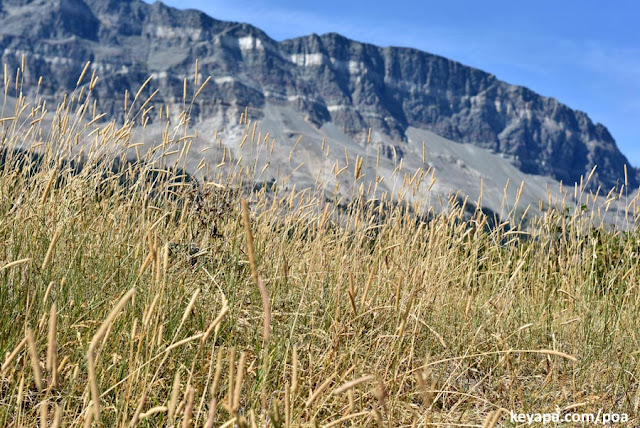 |
| Idyllic setting of the massacre |
Note: Gruesome photograph below. The squeamish have been warned.
Praying mantis, spiders, and other predators sometimes lurk in flowers in order to ambush visiting pollinators. But because grasses are mostly wind pollinated, they are usually spared the drama of such interactions.
But two days ago while going through the sights in Glacier National Park's "Going to the Sun" road (in Montana, USA), I stumbled upon the grisly remains of some past feast.
Masses of Phleum pratense (Timothy grass) formed an impressive foreground to one of the many majestic mountains that decorate the park, and while taking photographs I noticed one particular inflorescence seemed to have unmoving insects on it.
 |
| The grisly remains of four insects |
When I took macro shots of the specimens, I was surprised to discover that they were the desiccated remains of what looked like flies. As noted in a past post, insects like hoverflies do visit flowerheads of grasses like Phalaris arundinacea (Reed Canary Grass) to collect pollen.
 |
| Hoverfly visits P. arundinacea |
I've also photographed spiders lurking menacingly in the inflorescence of Cenchrus purpureus (Napiergrass).
 |
| Spider lurks in C.purpureus |
In the case of P. pratense there are even studies that show native bumblebees collect pollen from this species, although whether or not they aid in its pollination is uncertain.
Such visitations allowed some predator (likely a spider) to take advantage of this behavior in order to nab a few unwary victims. Fortunately, I'm no big fan of flies, but it was a gruesome find anyways.
No comments:
Post a Comment